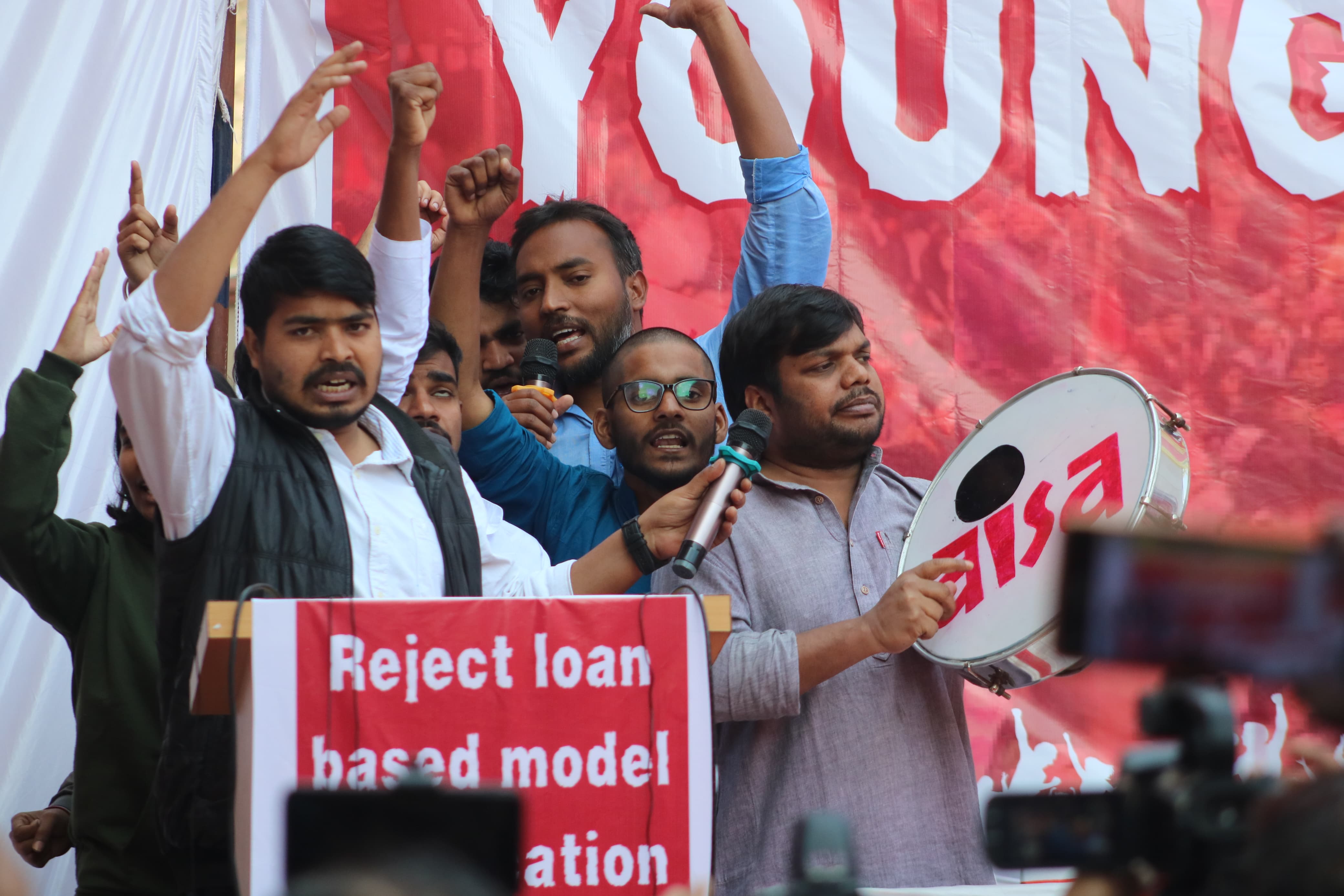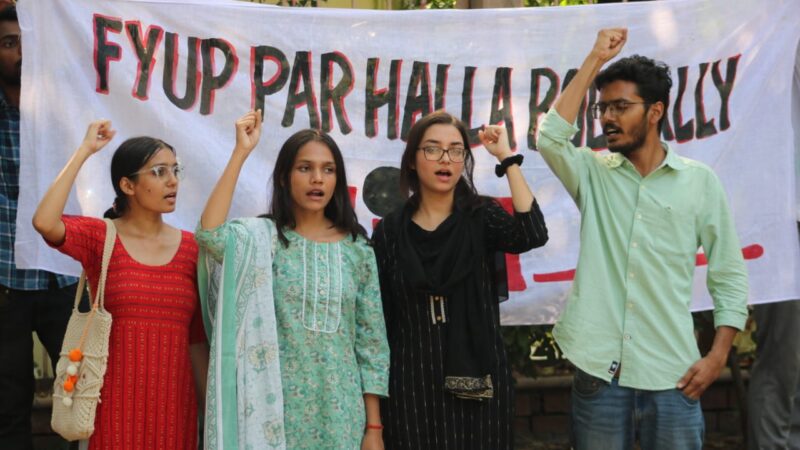Dissecting the New Land Acquisition Ordinance
 The past decade has seen sustained struggles by farmers, adivasis, and displaced people against forced acquisition of agricultural land across the country by various companies, corporate houses, and governments. The indomitable struggle by adivasis and farmers in Odisha, Uttar Pradesh, Singur and Nandigram (West Bengal), Maharashtra, Punjab, Jharkhand, Bihar and Tamil Nadu etc. forced the last UPA government at the Centre changed the colonial Land Acquisition Act of 1894, and a new law was passed in 2013. Even though the 2013 law failed to address the issues of covert force, rapidly dwindling agricultural land and food security, it was forced to include certain crucial provisions before land could be acquired. At least Parliamentary discussions took place, several social movement groups gave their inputs and it was passed with the support of both the Congress and the BJP and was called the Land Acquisition and Rehabilitation Act 2013. But once in power, the BJP government began to show its true colours. Eight ordinances have been passed over a period of 7 months. In spite of having a majority in Parliament the government could not muster the courage for a debate, especially on the Land Acquisition ordinance.
The past decade has seen sustained struggles by farmers, adivasis, and displaced people against forced acquisition of agricultural land across the country by various companies, corporate houses, and governments. The indomitable struggle by adivasis and farmers in Odisha, Uttar Pradesh, Singur and Nandigram (West Bengal), Maharashtra, Punjab, Jharkhand, Bihar and Tamil Nadu etc. forced the last UPA government at the Centre changed the colonial Land Acquisition Act of 1894, and a new law was passed in 2013. Even though the 2013 law failed to address the issues of covert force, rapidly dwindling agricultural land and food security, it was forced to include certain crucial provisions before land could be acquired. At least Parliamentary discussions took place, several social movement groups gave their inputs and it was passed with the support of both the Congress and the BJP and was called the Land Acquisition and Rehabilitation Act 2013. But once in power, the BJP government began to show its true colours. Eight ordinances have been passed over a period of 7 months. In spite of having a majority in Parliament the government could not muster the courage for a debate, especially on the Land Acquisition ordinance.
The new Land Acquisition Ordinance has reversed all the positive advances that were fought for and got incorporated in the 2013 law. In the new ordinance the government has brought in amendments under the new section 10 (A) exempting 5 big areas from the ambit of the Land Acquisition Act, such as industrial corridors, security, rural infrastructure, housing and related infrastructure, and social infrastructure including projects under government and PPP models. This huge list of exemptions virtually allows for all possible forms of land grab by force. Under the old law these matters required 70% farmers’ consent in the case of joint government and private projects, and 80% farmers’ (land owners) consent in the case of private projects; this condition has been removed from the new ordinance. At the same time, NOW multi-crop irrigated land can also be acquired for such projects. The provision for social impact assessment in the case of land acquired scrapped. The definition of “families affected by acquisition” has also been changed and rendered very vague. So, the Ordinance essentially prevents the very recognition and possibility of compensation for all those who are not direct owners of land but are dependent on it for livelihood.
The condition under Section 101 of the 2013 law, which requires that land not used for 5 years be returned to the owner, has been altered thus: “The time limit which has been set for a project or 5 years, whichever is later”. Thus, this opens the doors for real estate mafia to acquire land, sit on it, and then sell it when the land prices have shot up.
Changes have also been made in other legal and rights’ related matters. Section 87 of the earlier law provided that in case of breach of law by a Central or State official, the Head of the concerned department would also be held responsible, but in the new ordinance action has been provided only under Section 197 of the general criminal procedure code of the court. In the earlier law the time limit for implementing provisions (compensation, relief, and rehabilitation and other similar provisions) was 2 years, which has now been altered and extended to 5 years. The provision of fixing and disbursement of compensation, to be monitored by the court, has also been removed. None of these will be necessary under the new ordinance. Under Section 24 (2) of the old law, if there is a court case, a time limit of 5 years for a stay order had been set (which the Supreme Court also deemed correct); the new ordinance has changed this and removed time limits. Under the retrospective provision, the old law made provisions for acquisition to be scrapped where compensation for acquired land was not paid or possession of land was not taken. Obviously this has not been done anywhere in the country within just one year, and even if this has happened in one or two exceptional cases, the government has now armed itself with the weapon to scrap them.
Clearly this ordinance is not just the return to the 1894 Land Acquisition Act but far more regressive. The new ordinance facilitates land acquisition by any private entity- institutions, corporate houses, and companies. In the five big categories covered in the ordinance, land grab for private profit, including the real estate mafia, has been classified as a ‘public good’. This is the argument of the Modi government’s Finance minister Arun Jaitley: “How will our cities and urban settlements be built? Will they contain only government schools and colleges with no permission for other educational and medical institutions?” The question is, why should these private entities, which have profit-making as their objective, not be required to acquire consent from the farmers pay the farmers for the land they acquire? Will the government force owners of a DLF or Reliance mall to sell their land without their consent, as it is expecting farmers to do?
In scrapping the consent clause and the social impact assessment clause, in allowing for unmonitored compensation process and a no return clause, the government has displayed its tyrannical face, and proved that it does not care for farmers, peasants and common working people.
SEE ALSO:
Imposing ‘Yes Boss’ Culture: All-Out Saffronization: Censor Board to Corporate Media
Reject the Politics of Assassination and Appropriation of Gandhi by the Communal Fascist Brigade!






This paragraph is truly a nice one it assists new net viewers, who are wishing for blogging.